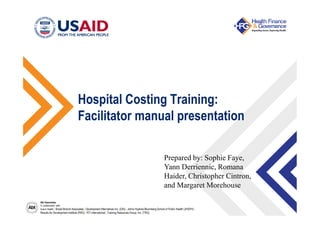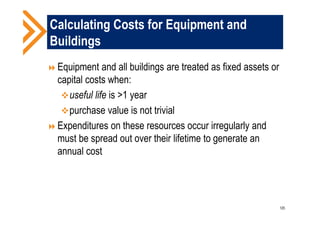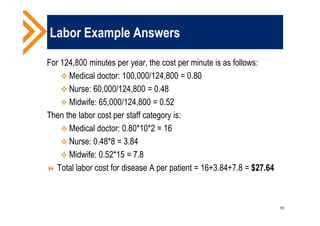This document outlines a training manual for a hospital costing workshop. It provides an agenda for the 3-day workshop covering topics like the fundamentals of costing, the MASH costing tool, and calculating unit costs. The workshop aims to teach participants how to conduct costing exercises to understand their hospital's costs and improve management. Sessions include introductions, an overview of costing concepts, the costing process, and a demonstration of the MASH tool which is an Excel-based framework for tracking and analyzing hospital resources, services, and costs.














































































































































































